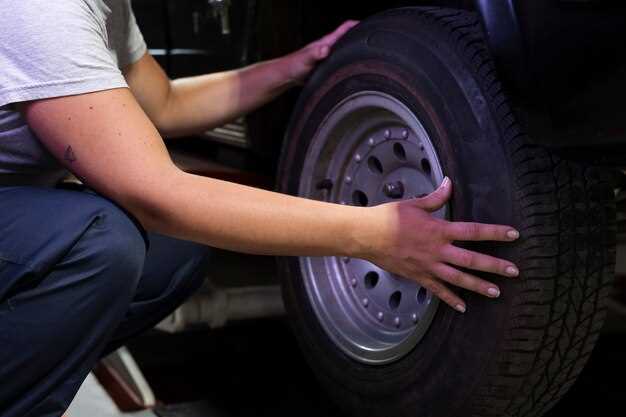
When it comes to maintaining the longevity and performance of your vehicle, proper tire storage is crucial. Whether you switch your tires seasonally or keep them as spares, understanding the best practices for storing tires ensures that they remain in optimal condition. Tires are not just rubber; they are sophisticated components designed for performance and safety, making proper care essential.
Storing tires correctly can prevent damage from environmental factors, improper stacking, and excessive exposure to sunlight. Each season brings its own challenges, and adapting your tire storage techniques accordingly can significantly enhance their lifespan. Proper tire storage not only saves you money in the long run but also enhances safety on the road.
In this article, we will explore the best practices for storing tires, focusing on various methods, the significance of location, and how to avoid common pitfalls. By following these guidelines, you will ensure that your tires remain ready for optimal performance whenever you need them.
Choosing the Right Environment for Tire Storage
When it comes to tire storage, selecting an appropriate environment is crucial for ensuring longevity and optimum performance. Tires are exposed to various environmental factors that can lead to deterioration if not stored properly. Therefore, careful consideration of the location and conditions is essential for effective tire care.
First and foremost, tires should be stored in a cool, dry place where the temperature consistently remains between 15°C (60°F) and 25°C (77°F). Extreme heat can cause rubber to crack and significantly reduce the life of the tires. Conversely, excessively cold temperatures can make the rubber brittle, impacting its flexibility.
Humidity also plays a vital role in tire maintenance. Excessive moisture can lead to mold growth and deterioration of the rubber compound. An ideal environment should maintain low humidity levels to prevent any harmful effects on the tires. Conversely, storing tires in direct sunlight can result in ultraviolet (UV) exposure, leading to oxidation and premature aging. Therefore, choose a shaded or enclosed area to limit UV exposure.
Moreover, ensure that the storage area is clean and free from any contaminants such as oils or solvents, which can degrade the rubber. Avoid places with chemical storage or areas that experience frequent temperature fluctuations, as these can adversely affect the tire’s integrity.
Lastly, consider the tire positioning during storage. Tires should ideally be kept in an upright position if they are not mounted on rims, as this reduces the risk of deformity. If you choose to stack tires, ensure they are clean and evenly stacked to prevent uneven pressure on the sidewalls. With these precautions in mind, you can effectively protect your tires and extend their service life.
Preparing Tires for Long-Term Storage

Proper care for tires before long-term storage is essential to maintain their condition and ensure their longevity. The first step involves cleaning the tires thoroughly to remove dirt, grime, and any chemical contaminants. Use a mild soap solution and a soft brush to scrub the sidewalls and treads. Rinse well and allow the tires to dry completely to prevent moisture buildup, which can lead to mold and degradation.
Once the tires are clean, inspect them for any signs of damage, such as cracks, bulges, or excessive wear. Any compromised tires should be repaired or replaced before storage to avoid potential safety issues when reinstalled. Additionally, check the tire pressure and inflate each tire to the manufacturer’s recommended level to help maintain their shape during storage.
For long-term storage, it is crucial to choose a suitable environment. Tires should be stored in a cool, dry location away from direct sunlight and sources of heat. UV rays can cause the rubber to deteriorate, while high temperatures can exacerbate chemical reactions that lead to degradation. Ideally, tires should be stored indoors, in a climate-controlled area if possible.
When arranging tires for storage, avoid stacking them directly on top of each other in a vertical position, as this can cause deformation. Instead, if storing mounted on rims, place them upright; if unmounted, stack them horizontally. Use tire bags or light covers to shield them from dust and pests, which could damage the rubber over time.
Lastly, consider periodic checks during the storage period. Inspect the tires for any changes or signs of deterioration and ensure that they remain in optimal condition. By following these steps, you can ensure that your tires remain reliable and safe to use when you need them again.
Maintaining Tire Condition During Off-Season

Proper tire storage during the off-season is essential to ensure their longevity and performance. Start by cleaning tires thoroughly to remove dirt, brake dust, and any chemicals that may cause deterioration. Use a mild detergent and water, followed by a complete drying process to prevent moisture buildup.
When storing, keep tires in a cool, dry place away from direct sunlight, which can cause rubber to degrade. Avoid placing tires directly on concrete floors, as moisture from the ground can seep into the rubber. Instead, use wooden pallets or shelves as a barrier.
If tires are mounted on rims, stack them vertically or mount them on a tire rack to prevent deformation. For unmounted tires, store them upright and avoid stacking them too high to minimize pressure on the bottom tires. This approach will help maintain the overall shape and integrity of the tire.
Consider using tire covers to protect from dust and environmental factors if storage is outdoors. Additionally, maintain proper air pressure in the tires if they are mounted on vehicles to prevent flat spots during extended periods of non-use.
Regularly check stored tires for any signs of aging or damage, such as cracks or bulges, as part of maintenance during the off-season. This proactive approach will not only extend the life of the tires but also ensure optimal performance when the next driving season begins.



